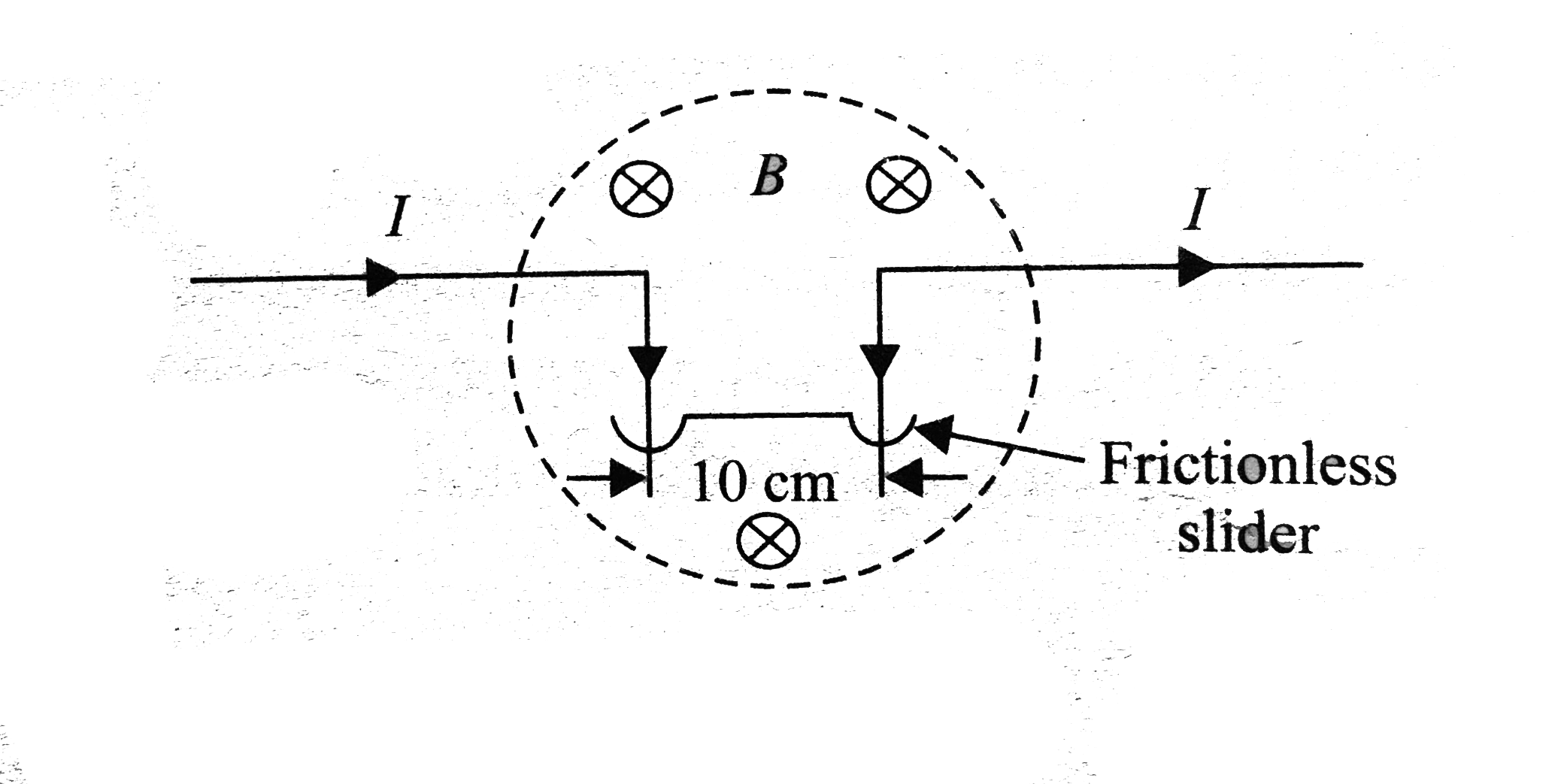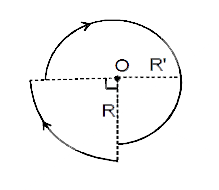A 10 cm length of wire with a mass of 20g is attached frictionlessly to the vertical segments of a wire in which a current I flows. The surrounding has horizontal field B=104G and the vertical direction is shown in fig. What must be the current I (in A) to maintain the 10cm wire in an equilibrium position?

The correct Answer is:2
B=104G=1T
For equilibrium, magnetic force should be equal to weight of wire.
IBl=mg⇒I×1×0.10=20×10−3×10⇒I=2A
Topper's Solved these Questions
- MAGNETIC FIELD AND MAGNETIC FORCESBOOK - CENGAGE PHYSICSCHAPTER - MAGNETIC FIELD AND MAGNETIC FORCESEXERCISE - Archives Fill In The Blank
6 Videos
- MAGNETIC FIELD AND MAGNETIC FORCESBOOK - CENGAGE PHYSICSCHAPTER - MAGNETIC FIELD AND MAGNETIC FORCESEXERCISE - Archives True /false
4 Videos
- MAGNETIC FIELD AND MAGNETIC FORCESBOOK - CENGAGE PHYSICSCHAPTER - MAGNETIC FIELD AND MAGNETIC FORCESEXERCISE - Exercises Linked Comprehension
28 Videos
- KINETIC THEORYBOOK - CENGAGE PHYSICSCHAPTER - KINETIC THEORYEXERCISE - Question Bank
31 Videos
- Magnetism and MatterBOOK - CENGAGE PHYSICSCHAPTER - Magnetism and MatterEXERCISE - Question Bank
50 Videos
Similar Questions
A vertical wire in which current is flowing produces a neutral point with the earth's horizontal field at a distance of 5 cm from the wire in air . What is current , if BH=0.18×10−4T?
View SolutionAn electric current flows in a horizontal wire from East to West. What will be the direction of magnetic field due to current at a point (i) North of wire, (ii) above the wire.
View Solution
Knowledge Check
A straight peice of conducting wire with mass M and length L is placed on a frictionless incline tilited at an angle θ from the horizontal (as shown in fig) There is a uniform. Vertical magnetic field at all points (produced by an arrangement of magnets not shown in fig. To keep the wire from sliding down the incline, a voltage source is

attached to the ends of the wire. When just the right amount of current flows through the wire, the wire remains at rest. Determine the magnitude and direction of the current in the wire that will cause the wire to remain at rest.AMgtanθ2LB to the leftBMgtanθLB to the rightCMgtanθLB to the leftD3Mgtanθ2LB to the left
If the current in a wire is flowing in the vertically downward direction and a magnetic field is applied from west to east, what is the direction of force on the wire ?
View SolutionA wire has a length of 2.0 m and a resistance of 5.0Ω. Find the electric field existing inside the wire if it carries a current of 10 A.
View SolutionIn the straight wire A, current is flowing in the vertically downward direction whereas in wire B the current is flowing in the vertically upward direction. What is the direction of magnetic field :
(a) in wire A ?
(b) in wire B ?
Name the rule which you have used to get the answer.
View SolutionA straight horizontal conducting rod of length 0⋅60m and mass of 60g is suspended by two vertical wires at its ends. A current of 5⋅0A is set up in the rod through the wire. (a) What magnetic field should be set up normal to the conductor in order that the tension in the wire is zero?
(b) What will be total tension in the wires if the direction of current is reversed, keeping the magnetic field same as before (Ignore mass of the wire), g=10ms−2.
View SolutionA current-carrying straight wire is held in exactly vertical position. If the current passes through this wire in the vertically upward direction, what is the direction of magnetic field produced by it ? Name the rule used to find out the direction of magnetic field.
View SolutionAn air-solenoid has 500 turns of wire in its 40 cm length. If the current in the wire be 1.0 ampere then the magnetic field on the axis inside the solenoid is -
View SolutionA current of I ampere is flowing through each of the bent wires as shown the magnitude and direction of magnetic field at O is

View Solution
